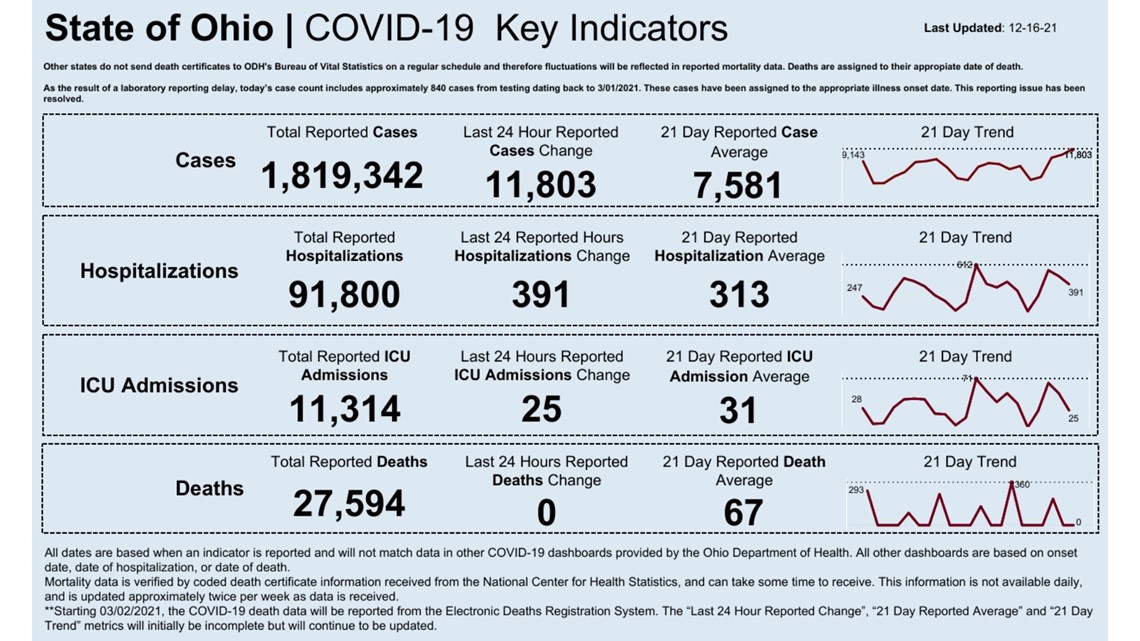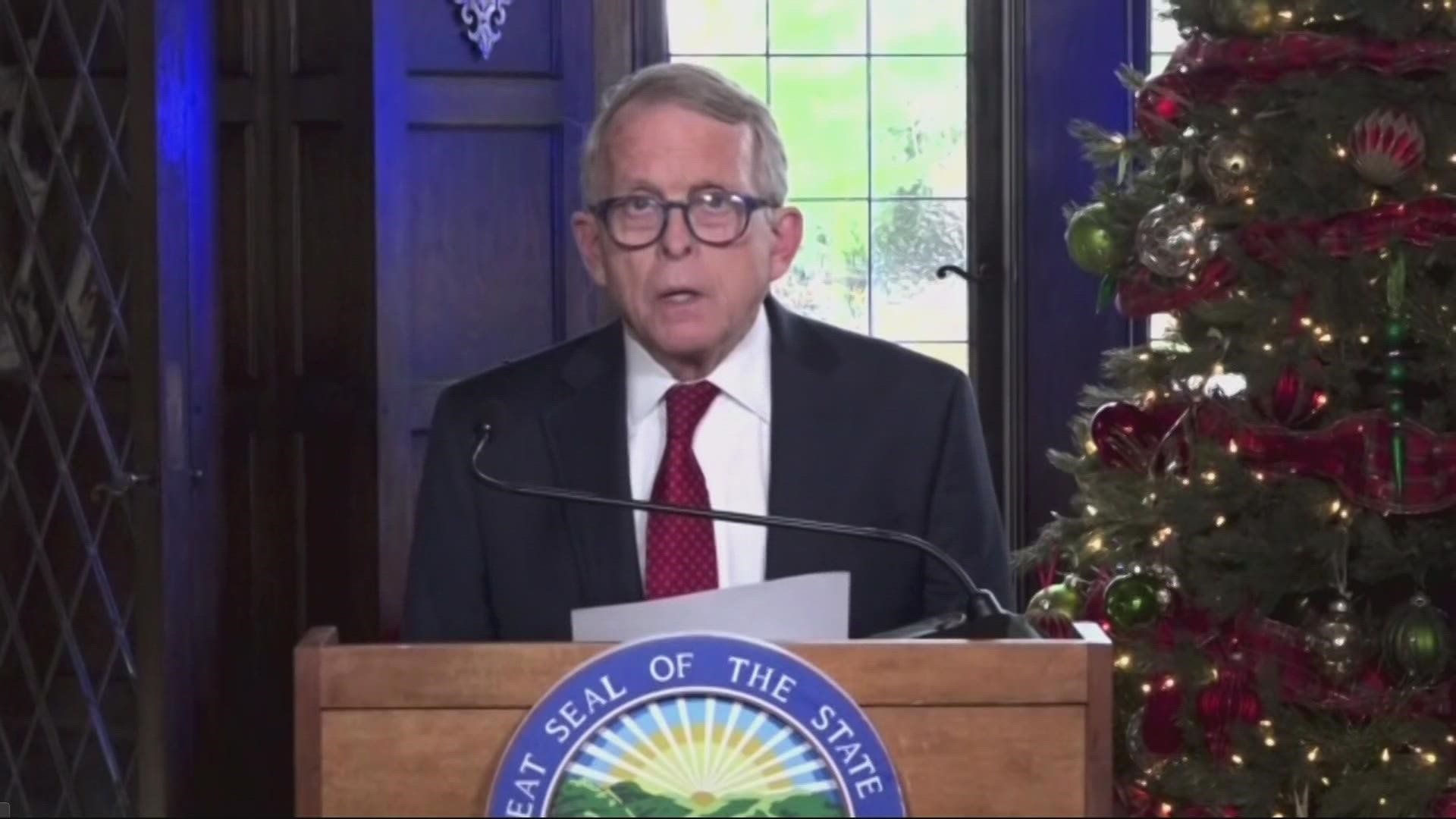COLUMBUS, Ohio — Members of the Ohio National Guard will be sent to hospitals throughout the state to help ease the strain during the current COVID-19 surge, Gov. Mike DeWine said Friday.
A total of 1,050 troops are expected to begin on Monday, with 150 of them being highly-trained medical personnel who will be primarily focused on the northeastern part of the state. The other 900 troops will be sent throughout the state to help with transport within the hospitals, food and environmental work.
DeWine said Major General John C. Harris, Jr. will continue to look over the roster, as the state tries to avoid a situation where they take a troop out of their regular position at a hospital or clinic and move them to another one.
Currently, there is no set end for their deployment.
"We're going to keep them in there as long as they're needed. We're going to do what we have to do," DeWine said.
In addition to the national guard, the state is working with a health care staffing company, bringing in qualified nurses and personnel from out of state. While the additional staffing will be concentrated in the areas most heavily impacted, DeWine said the entire state will get relief.
WHAT IS CAUSING THE STRAIN ON HOSPITALS?
In the early stages of the pandemic, the fear was that hospitals would run out of beds. But now, the focus is on a lack of personnel.
DeWine said the nearly two-year battle against COVID-19 has taken its toll.
"Twenty-two months they have fought this war, and I want to thank them, and thank them again," DeWine said.
During a phone call with hospitals throughout Ohio, the governor said an administrator detailed how a nurse's day often looks; getting off work at 4 p.m., only to return by midnight.
DeWine called it a perfect storm with three key ingredients:
- High levels of the delta variant driving hospitalizations
- The emergence of the new, highly contagious omicron variant which is now in the state
- The start of flu season, which experts say should be back to normal after a mild season during high volumes of masking
"All of those are factors. When you add to that, entering the holiday season, we are at a point 22 months into this where medical personnel are slammed," DeWine said.
As a result of the high patient count and hospitals being understaffed, almost all hospitals in the northern part of the state, especially in the east, have stopped elective surgeries. Those in the middle are starting to pause and the south is preparing to make the same call.
"This, I think, demonstrates the gravity of the situation we are in," DeWine said.
With both the delta and omicron variants spreading fast, DeWine said that now is the time to exercise caution to be careful. He suggested schools go back to masking up if they haven't already.
He also asked on the behalf of hospitals to refrain from going to emergency rooms if your only objective is to get a test, noting that there are plenty of other places testing can be done.
COVID-19 DATA
On Friday, the Ohio Department of Health reported:
- 11,803 new COVID-19 cases
- 391 new hospitalizations
- 25 new ICU admissions
DeWine said Friday there were 4,723 total Ohioans in the hospital due to COVID-19 — that's the highest since Dec. 22, 2020.
He claimed the current hospitalizations have been driven mainly by the unvaccinated.


But, more Ohioans are opting to get the shot. In November, 294,000 Ohioans got the COVID-19 vaccine for the very first time. Already in December, another 101,000 received their first dose.
The booster shots are proving popular, too: in November, 945,000 Ohioans rolled up their sleeves for an additional dose, and 514,000 have done the same so far this month.

